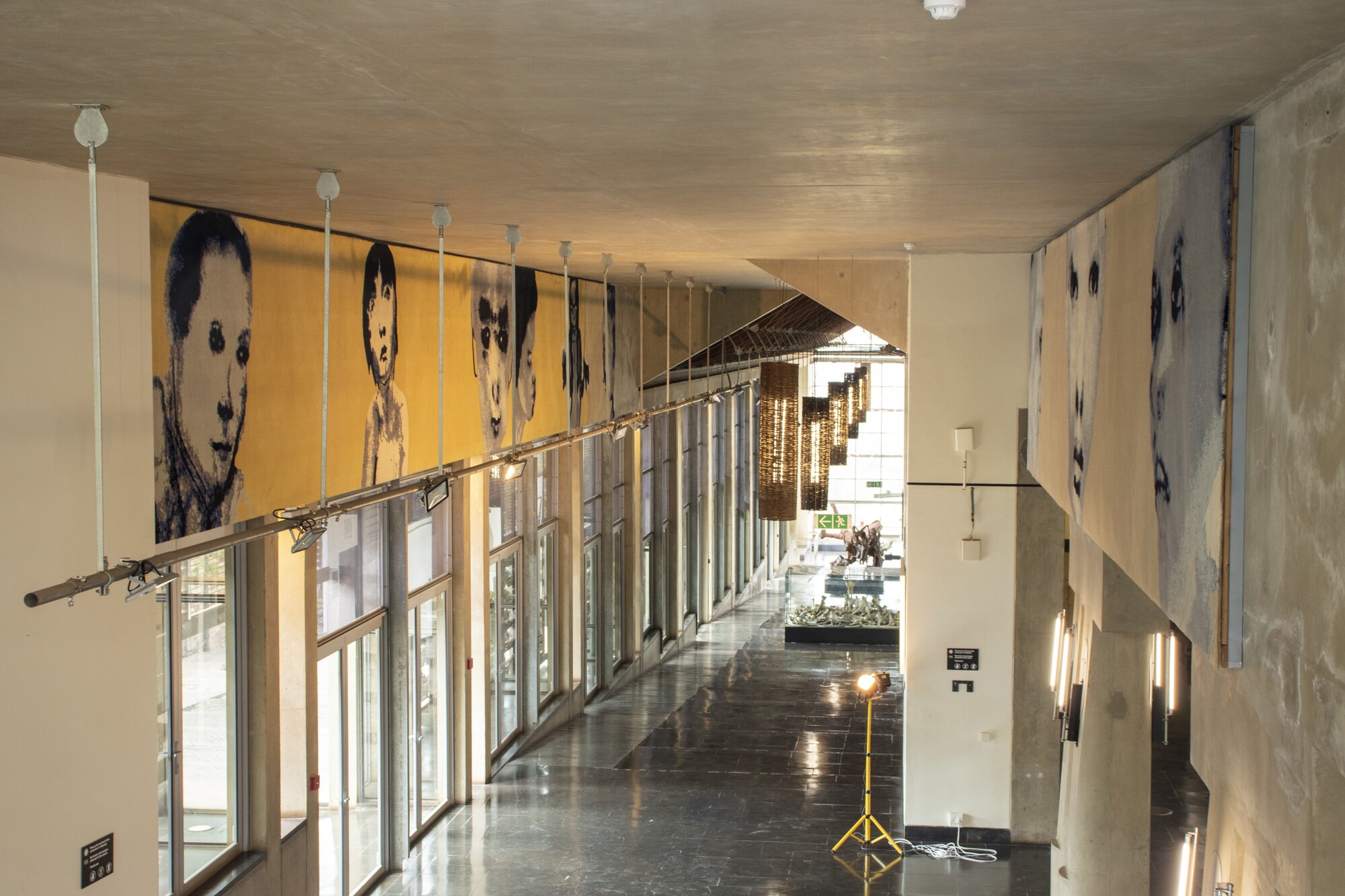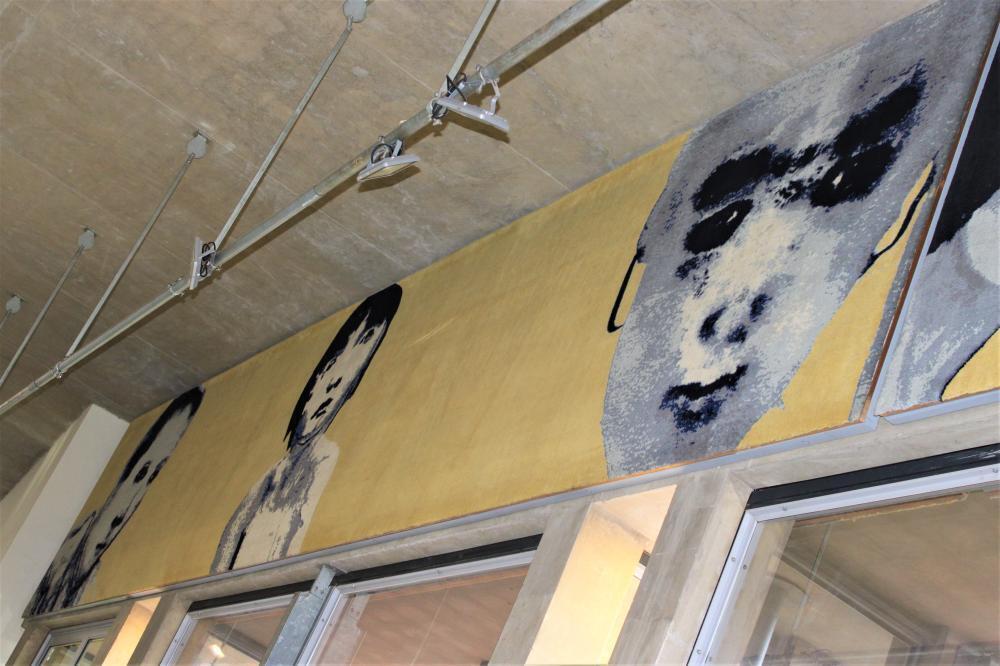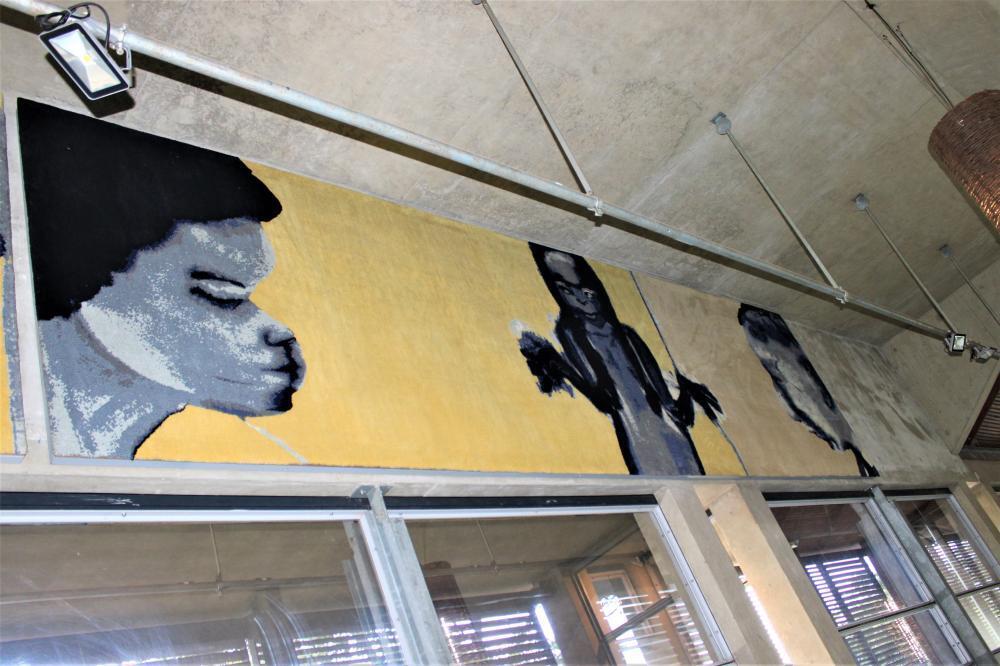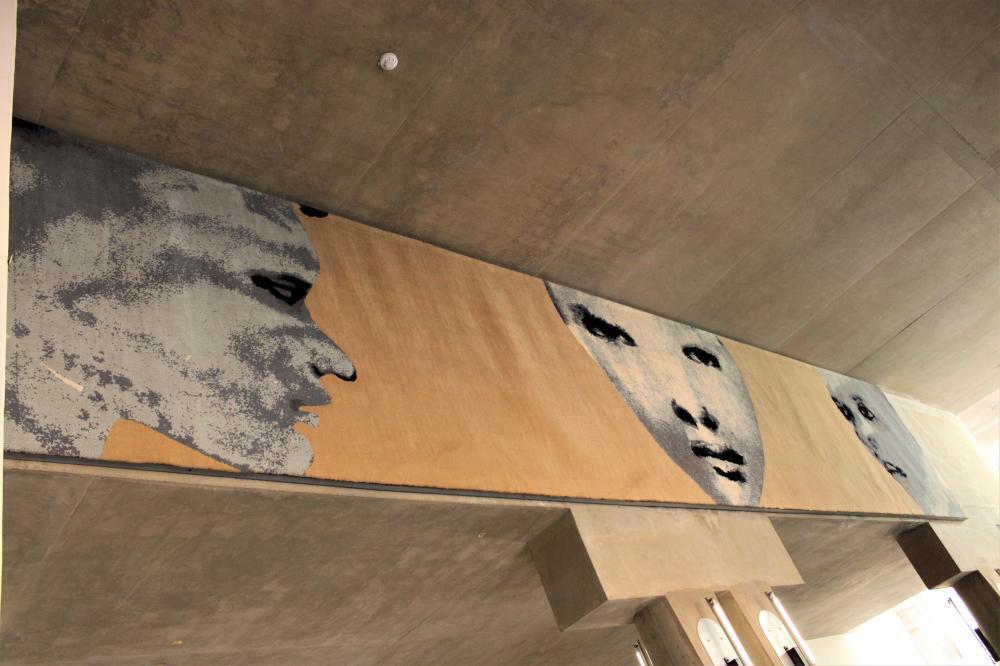The Benefit of the Doubt
| Multi-Part information: | In 1998, Marlene Dumas attended a talk on South Africa’s Truth and Reconciliation Commission that Justice Albie Sachs presented in The Hague. After the lecture Dumas invited Sachs to see her work in Amsterdam and offered to donate a duplicate set of these industrial tapestries, originally made for the Palace of Justice in Den Bosch, the Netherlands. In 2001, the tapestries were presented to the Constitutional Court at a ceremony in the Market Theatre, where they stood on view for some weeks. When the construction of the Constitutional Court building was in progress, the architects suggested they be installed in the court chamber, but in order to keep the chamber a more sober, unadorned space, they ultimately found a home on the concrete beams linking the court foyer with the exhibition gallery in 2004. The Benefit of the Doubt engages with the work of a judge. As indicated by the artwork’s title, the work symbolises the legal principle of innocence until proven guilty and speaks to the burden of proof being placed on the State in criminal law cases. The medium of textiles also speaks to the notion of ”softening” or “extenuating” circumstances”. Diverse people are depicted without any visible clothing or markers, leaving their societal status and class unknown. According to academics Eliza Garnsey and Wessel le Roux, a narrative of doubt concerning guilt and innocence is woven into this work. The facial expressions range between austere, resigned, and pensive; the closed eyes, direct stares, and sidelong glances not only evoke uncertainty, but also a powerful sense of responsibility of the observer towards these unknown strangers. They are ambiguously vulnerable, as if they are urgently appealing for help, or waiting desperately upon a reply and a sign of redemption. The work seems to convey compassion instead of authority. A society is envisioned that does not discriminate on the basis of race, gender, sexuality and the many other grounds of unjust discrimination that are now outlawed in South Africa. The three faces appearing on each of the three panels suggest a multiplicity of voices and testimonies to take into account – one is reminded of the duty of the court to make judgments impartially and without prejudice. It also speaks to the value of ubuntu, a concept that permeates the Constitution generally, meaning “I am, because you are”. This artwork is explorative of the role of justice not just in post-apartheid South Africa but beyond its borders; it implores the legal system to place human dignity at the core of all that it does. The artist has said: “How judgements are made intrigue me, but I would never want to be a judge myself as the responsibility would weigh too heavy on me.” A poem by Dumas related to this work reads: “The Muse is exhausted / One is alone / Two is a couple / Three is politics”. The artwork was taken down in 2018 for a year-long conservation process funded by the Andrew W. Mellon Foundation. It was reinstalled with a new conservation frame in 2019, funded by the Bank of America Conservation Program. |

The Benefit of the Doubt in situ. Photography by Kenqu Akona, courtesy of Stacey Vorster.


